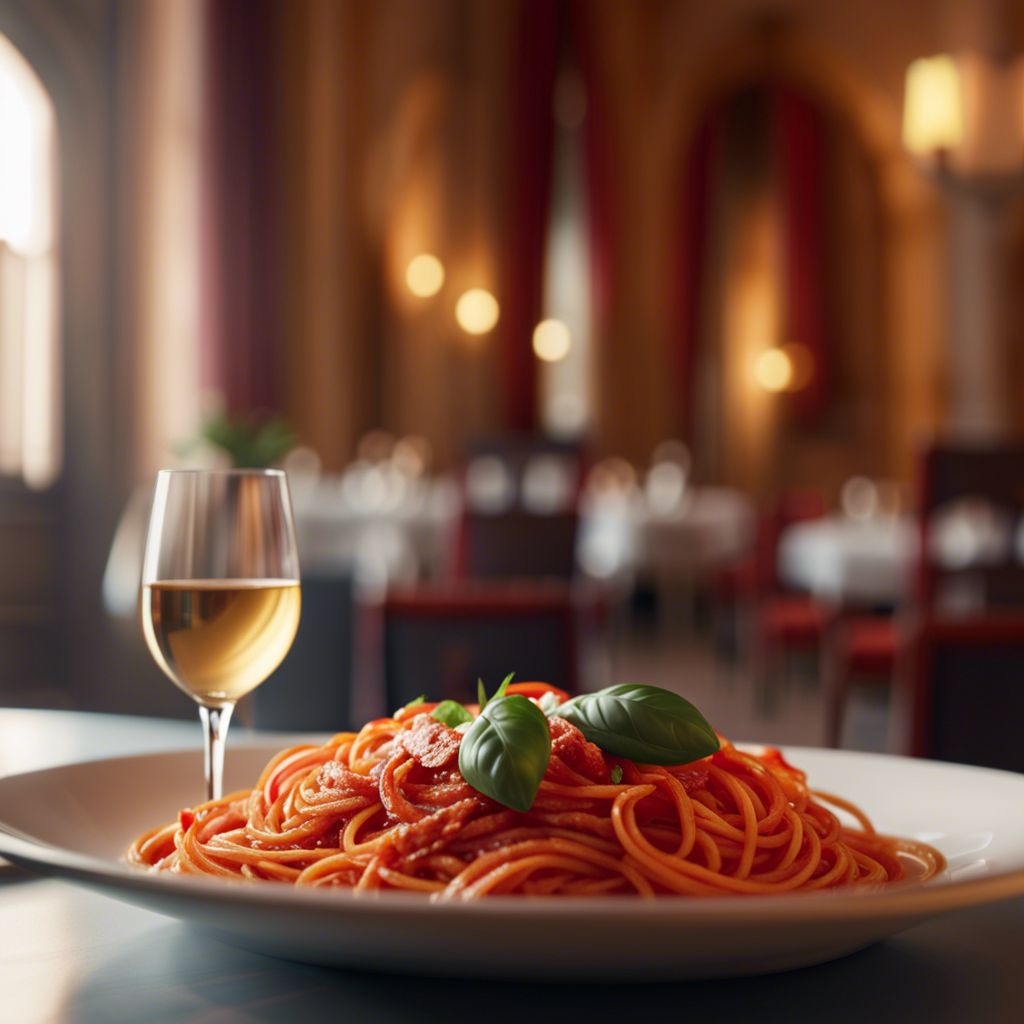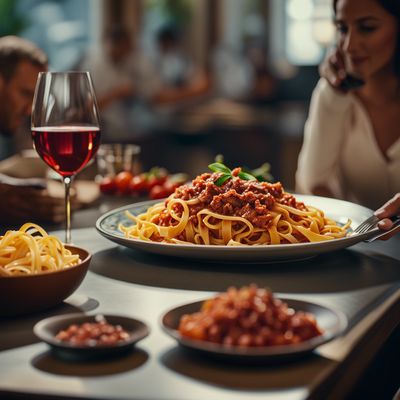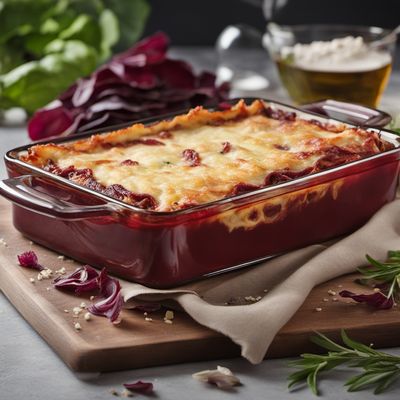
Cuisine
Italian cuisine
Italian cuisine is characterized by its regional diversity, with each region having its own unique dishes and ingredients. The cuisine is heavily influenced by the Mediterranean diet, with an emphasis on fresh, seasonal ingredients such as tomatoes, olive oil, and herbs. Pasta, pizza, and seafood are also staples of Italian cuisine.
Typical ingredients
Tomatoes, Olive oil, Garlic, Basil, Oregano, Parmesan cheese, Mozzarella cheese, Pasta, Prosciutto, Pancetta, Capers, Anchovies, Artichokes, Eggplant, Zucchini, Bell peppers
Presentation and garnishing
Italian dishes are often presented simply, with minimal garnishing. However, fresh herbs such as basil and parsley are commonly used as a finishing touch.
The first recorded cookbook in the Western world, De re coquinaria (On the Subject of Cooking), was written by a Roman named Apicius in the 1st century AD and contained recipes for dishes such as stuffed dormice and roasted flamingo.
More cuisines from this region...
Sicilian cuisine, Venetian cuisine, Tuscan cuisine, Neapolitan cuisine, Apulian cuisine, Sardinian cuisine, Lombard cuisine, Ligurian cuisine, Roman cuisine, Abruzzese and Molisan cuisine
History
Italian cuisine has a long and rich history, dating back to ancient Rome. The cuisine has been influenced by various cultures throughout history, including the Greeks, Arabs, and Normans. Italian cuisine as we know it today began to take shape during the Renaissance, with the emergence of regional specialties and the use of new ingredients such as tomatoes and potatoes.
Cultural significance
Italian cuisine is deeply ingrained in Italian culture, with food playing a central role in family gatherings and celebrations. The cuisine is also celebrated worldwide, with Italian restaurants and dishes being popular in many countries.
Health benefits and considerations
The Mediterranean diet, which is heavily influenced by Italian cuisine, has been linked to numerous health benefits including reduced risk of heart disease and stroke. However, Italian cuisine can also be high in calories and fat, particularly when it comes to dishes such as pizza and pasta.
Italian cuisine dishes Browse all »

Risotto tricolore
Tricolor risotto
Risotto tricolore is a traditional Italian dish made with rice and three different types of vegetables. It is a colorful and flavorful meal that is perfect for any occasion.

Bianchetti al limone
Whitebait with Lemon
Bianchetti al limone is a classic Italian dish that is perfect for a special occasion or a family dinner. This dish is made with fresh whitebait that is sautéed in a lemon and...

Salsiccia di polmone
Lung Sausage
Salsiccia di polmone is a type of sausage that is made with pork lung. It is a traditional Italian sausage that is typically served grilled or pan-fried.

Tagliatelle al ragù alla Bolognese
Tagliatelle with Bolognese Sauce
Tagliatelle al ragù alla Bolognese is a classic Italian dish that originated in Bologna. It is a hearty and flavorful pasta dish that is perfect for a cozy night in.

Tortino di mozzarella
Tortino di Mozzarella
Tortino di mozzarella is a delicious Italian dish made with mozzarella cheese and other ingredients.

Fonduta alla Valdostana
Valdostana Fondue
Fonduta alla Valdostana is a rich and creamy Italian cheese fondue made with Fontina cheese, milk, and egg yolks. It is a classic dish from the Aosta Valley in northern Italy.

Castagne alla valdostana
Valdostana Chestnuts
Castagne alla valdostana is a traditional Italian dish made with chestnuts and cheese. The dish is hearty and flavorful, making it a perfect comfort food for cold winter nights.

Ginestrata
Ginestrata is a traditional Italian soup made with vegetables and eggs. It is a popular dish in Italy and is often served as a first course.
Italian cuisine recipes Browse all »

Pinza Bolognese
Savory Italian Meat Pie: Pinza Bolognese Delight

Bersaglieri alla Toscana
Tuscan-inspired Bersaglieri: A Flavorful Italian Delight

Mandorlini del Ponte - Almond Bridge Cookies
Delicate Almond Bridge Cookies: A Sweet Italian Delight

Torcinelli with Ricotta Filling
Savory Stuffed Torcinelli: A Delightful Twist on Italian Cuisine

Creamy Fennel Risotto
Velvety Fennel Delight

Lasagne al Radicchio with Creamy Bechamel Sauce
Creamy Radicchio Lasagne: A Delightful Twist on a Classic Italian Dish

Creamy Parmesan Polenta with Roasted Vegetables
Savory Delight: Parmesan Polenta with Roasted Veggie Medley

Mare e Monti Pizza
Sea and Mountain Delight Pizza

Homemade Garden Vegetable Pizza
Garden Delight Pizza: A Burst of Freshness on Your Plate

Italian Rice and Endive Soup
Savory Delight: Italian Rice and Endive Soup

Tramezzino Veneziano with a Twist
Mediterranean Delight: A Modern Twist on Tramezzino Veneziano

Gnocchi al Castelmagno with Sage Butter Sauce
Savory Pillows of Delight: Gnocchi al Castelmagno